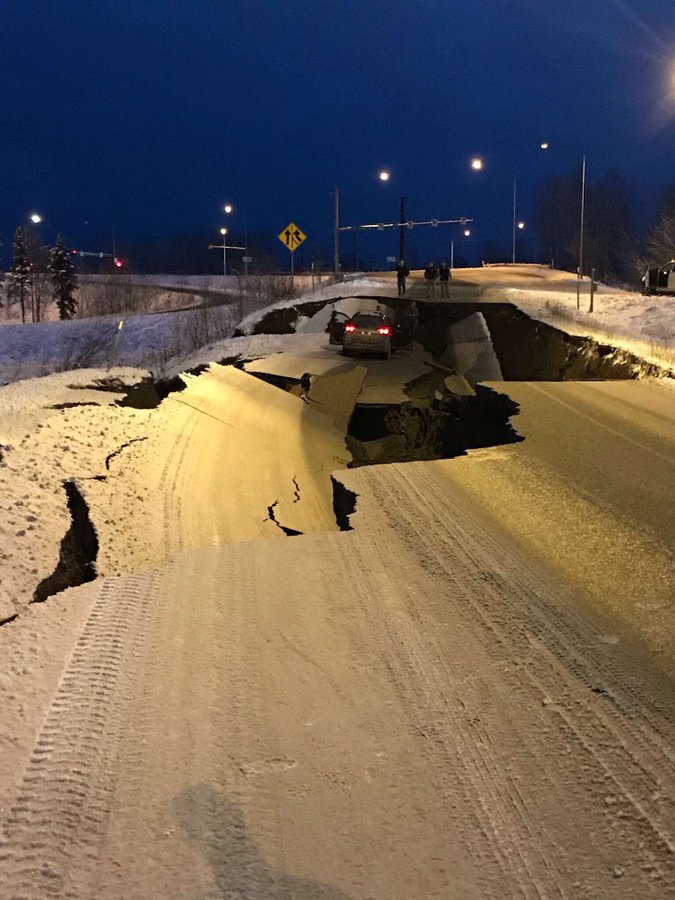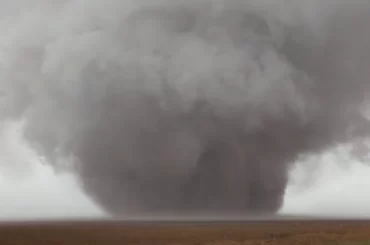Anchorage resident describes intense shaking from 7.0 quake
A powerful 7.0-magnitude earthquake rocked buildings and caused damage in Anchorage, Alaska; Ben English rode out the strong quake on the 10th floor of his office building.
[avantlink_ad merchant=”Palmetto State Armory” title=”Federal Black Pack Ammo sale.”][/avantlink_ad]
A 7.0 magnitude earthquake rocked the state of Alaska on Friday morning, churning up roads and sending office workers running to the streets in scenes locals described as pure “anarchy.”
The U.S. Geological Survey said the earthquake was centered about 5 miles north of Anchorage, Alaska’s largest city. There were no reported injuries.
“It was anarchy,” Brandon Slaton, a resident of nearby Kenai, Alaska, told The Associated Press. “There’s no pictures left on the walls, there’s no power, there’s no fish tank left. Everything that’s not tied down is broke.”
The National Weather Service issued a tsunami warning for the Cook Inlet and the Southern Kenai Peninsula shortly after the earthquake, but later canceled it. Police in Alaska’s Kodiak island community had told residents to head to higher ground.

In one of the most recent updates, AP said Anchorage Police Chief Justin Doll was recounting reports that parts of a scenic highway that heads from Anchorage toward mountains and glaciers have sunken and “completely disappeared.”.
He said officials were evaluating the damage to the Glenn Highway, but some was viewed as so significant that it will probably “take a long time to repair.”
Doll also said damage to bridges has been reported.
An AP reporter working in downtown Anchorage saw cracks in a two-story building after the quake.
People went back inside buildings after the earthquake, but a smaller aftershock a short time later sent them running back into the streets again.
Slaton was alone and home and soaking in the bathtub when the Alaska earthquake struck.
He said the quake created a powerful back-and-forth sloshing in the bathtub and before he knew it, he’d been thrown out of the tub by the force of the waves.
His 120-pound mastiff panicked and tried to run down the stairs, but the house was swaying so much she was thrown off her feet and into a wall and tumbled to the base of the stairs, Slaton added.
A lawyer who spoke to the Associated Press called it the most “violent” earthquake he’s experience in his 20 years in Anchorage.
Hank Graper says he was driving when the quake struck. He first thought his vehicle had a flat tire, then thought it was exploding. He realized it was an earthquake after he saw traffic poles swaying.
The federal Disaster Relief Fund, which has about $30 billion, should have sufficient resources for the state’s immediate post-quake needs, Fox News has been told. But it will take a while to determine the scope of the damage and how much assistance may be needed later.
Alaska Republican Sen. Lisa Murkowski, a senior member of the Appropriations Committee, told Fox the main roadways leading to and from the airport are damaged badly and cannot be repaired until spring. Most goods come into Alaska via Anchorage.
Alaska averages 40,000 earthquakes per year, with more large quakes than the other 49 states combined.
Southern Alaska has a high risk of earthquakes due to tectonic plates sliding past each other under the region. According to the U.S. Geological Survey, the Pacific plate is sliding northwestward and plunges beneath the North American plate in southern Alaska, the Alaska Peninsula and the Aleutian Islands.
On March 27, 1964, Alaska was hit by a magnitude 9.2 earthquake, the strongest recorded in U.S. history, centered about 75 miles east of Anchorage. The quake, which lasted about 4½ minutes, and the tsunami it triggered claimed about 130 lives.
Fox News’ Chad Pergram and The Associated Press contributed to this report.














